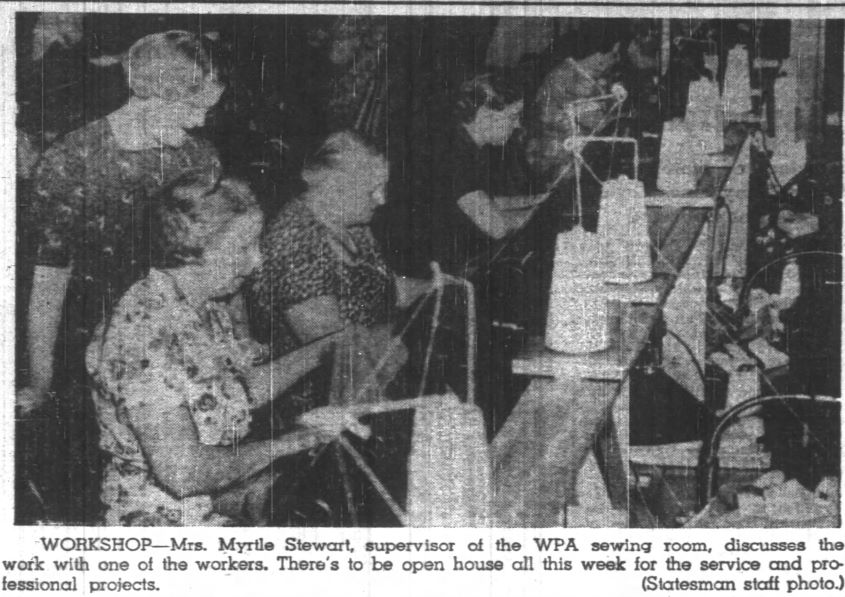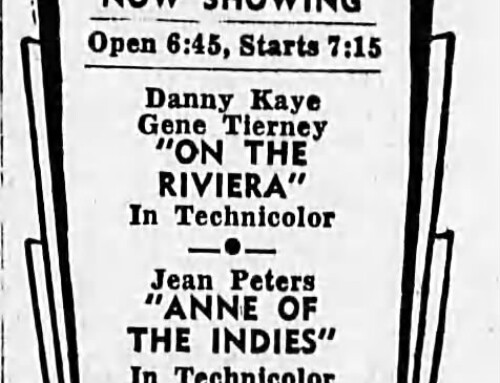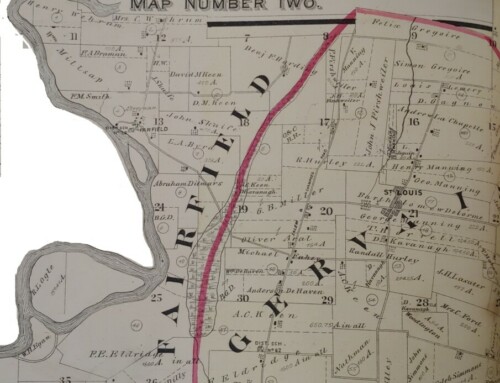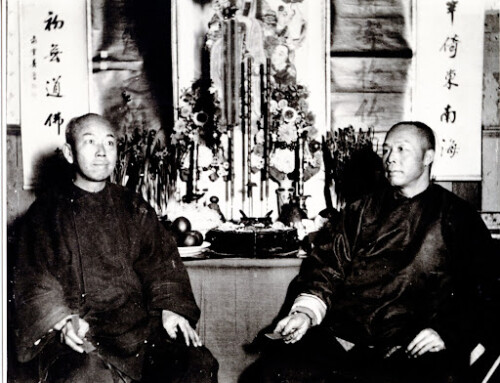
Salem WPA Sewing Room in the old high school building. Photo from Oregon Statesman,19 May 1940 p. 13. Image from Newspapers.com
WPA Sewing Rooms
The Works Progress Administration was a federal agency created by President Franklin D. Roosevelt as part of his New Deal initiative to combat unemployment and stimulate the economy during the Great Depression. The WPA aimed to create jobs for unemployed Americans to alleviate the immediate economic crisis but also provide long-term benefits to the nation’s infrastructure.
Community sewing rooms were one such project aimed at addressing the high unemployment rates among women during the Depression and provide them with an opportunity to contribute financially to their households. The WPA funded the establishment of these sewing rooms, which typically operated in community centers or other public spaces.
A sewing room in Salem was first established in the Chambers building at 357 N. High St. where it operated for four years 1935-1938. Then in the summer of 1938 the group moved to the old Salem High School at the corner of Marion and High Streets where it operated until closing in 1943.
In May 1940, the Oregon Statesman newspaper spotlighted a few of Salem’s WPA projects focused on providing opportunities for women in the community and included the sewing room. See account below:
One of the most interesting of all the WPA sewing projects is the sewing room, which comes under the heading of “service” and which is housed on the third floor of the old high school building.
Seventy women run 65 electric sewing machines and do other work of a regular garment factory. The women work in units of four, headed by a captain. The groups are paced, with all workers in a group of equal speed. There are twenty-five heavy power machines on which are sewed pants, jackets and shirts. Lighter work is done on the other sewing machines.
Bundles come to the workroom from Portland, where the garments have been cut by electric knives, 240 at a time. When a dozen garments are completed, with each woman doing her certain part of the sewing, they are inspected, folded and sent to storeroom. From there they go in large sacks to the state welfare warehouse and are distributed to persons on direct relief.
Salem’s workers are considered good, so garments which require greater skill, such as shirts and pants, are made here.
In girls’ or women’s dresses the variety of fabrics is quite wide. In a bundle of a dozen girl’s dresses there were usually about seven different colors in prints.
Two men are employed to do heavy work in the storeroom.
The women in the large, light sewing room have an attitude of personal interest toward the work being accomplished. Captains adjust [address] any question which may arise, at frequent round table discussions with Mrs. Myrtle Stewart, supervisor president.
Women work 130 hours a month, get second to the highest rate of pay in the state. All workers on the project are without other means of support and if married their husbands are unemployed. At the end of 18 months, according to law, they are automatically laid off but may be returned when re-certified, after their need is established.
References:
- “WPA Sewing Room To Be in Old High,” Oregon Statesman 22 Jun 1938, p. 3
- “Window Displays Show WPA Sewing,” Oregon Statesman 14 May 1938, p. 5
- “Sewing Crew Cut as WPA Rule Felt,” Oregon Statesman, 15 Sep 1939, p. 9
- “Sewing Project Will Be Shifted,” Oregon Statesman, 26 Oct 1939, p. 5
- “Efficiency in Women’s Project,” Oregon Statesman, May 19, 1940, p. 13






